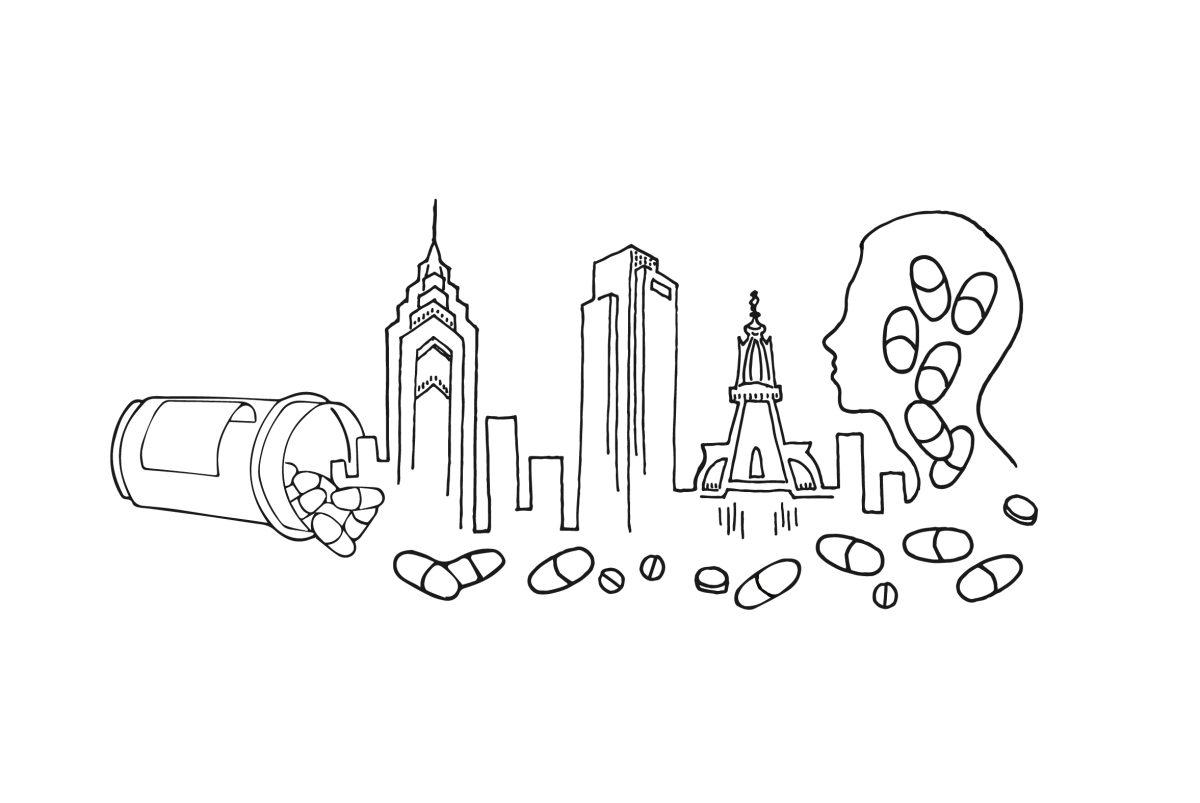Crisis demands education and action
To our readers:
Every day, more than 100 Americans die from opioid overdoses, a grim sign of a public health crisis that shows little sign of abating.
That worries Peter Clark, S.J., Ph.D., professor of medical ethics and director of the Institute of Clinical Bioethics at St. Joe’s.
“My fear is unless we address this issue, educationally and practically for protocols, we’re not going to go anywhere with this,” Clark said. “It’s only going to get worse.”
It is already worse here in our own state, our own city.
Between August 2016 and August 2017, the percentage of drug overdose deaths increased by 42.5 percent in the state of Pennsylvania, according to the National Center for Health Statistics.
Here in Philadelphia, the crisis is especially prevalent. In 2017, more than 1,200 people died of overdoses with 80 percent of those deaths involving opioids, according to the Philadelphia Mayor’s
Task Force to Combat the Opioid Epidemic in Philadelphia.
Over the course of the next four issues of The Hawk, we will take an in-depth look at the opioid crisis and how this national epidemic is affecting our campus and city in particular. We will tell stories of individuals–students, roommates, family members, university administrators and staff, city police officers and activists–who are affected by the opioid crisis.
Our stories will examine both campus and city-wide efforts to help people who have substance use disorders, and those who work to stem the rising number of overdoses and deaths. We will look at the language used to describe both the crisis and people who are suffering from substance use disorders, and why those words matter. Additionally, our work will examine the role race places in the epidemic, and why we are paying attention to the opioid epidemic but may have ignored other drug crises.
In May of 2017, the Mayor’s Task Force to Combat the Opioid Epidemic in
Philadelphia issued a final report to Philadelphia Mayor Jim Kenney.
“The opioid epidemic affects all of us in Philadelphia,” Kenney stated at the top of the report. “Drug overdoses, and overdoses involving opioids, are now a leading cause of death in our city. Opioids are also destroying families and relationships and undermining the quality of life in Philadelphia.”
The Task Force’s report includes recommendations for short and long-term solutions, including opening safe injection sites in Philadelphia to help prevent overdoses. Since much of the crisis stems from prescription drug use, proponents of safe injection sites argue that it is next to impossible to eradicate opioid abuse. At a safe injection site, health providers can provide instant treatment for overdoses in the form of Naloxone (widely known as Narcan), which can treat an overdose in an emergency situation.
As we explore in an article in this week’s issue, here on Hawk Hill, a group of researchers will soon present a plan to the city of Philadelphia on how to effectively create a safe injection site. The researchers are hoping to eventually create a Center for Addiction at St. Joe’s, another story we cover in our series.
Our series also includes stories about Allies for Recovery, a training program designed to help the university community better support people in recovery, and recovery housing for students.
We cover these stories with hope for progress. As Katie Bean, assistant director of Student Outreach and Support and Wellness, Alcohol & Drug Education (WADE) Program, has cautioned: “Stay out of the weeds, focus on life now rather than life later. Know that recovery is possible.”
We believe it is on us, the members of the Hawk community, to combat this crisis through arming ourselves and our readers with stories and information.
Sincerely,
Ana Faguy ’19, Editor in Chief
















































